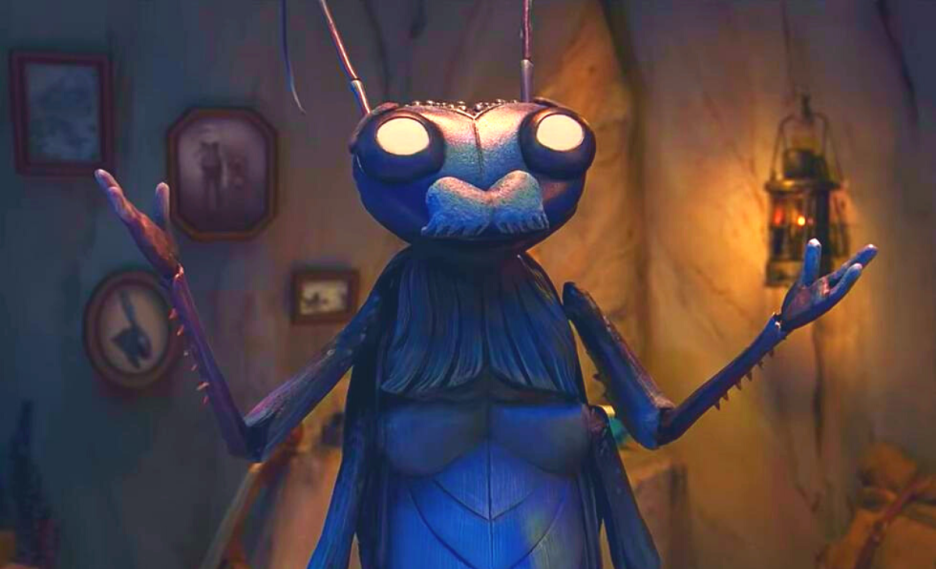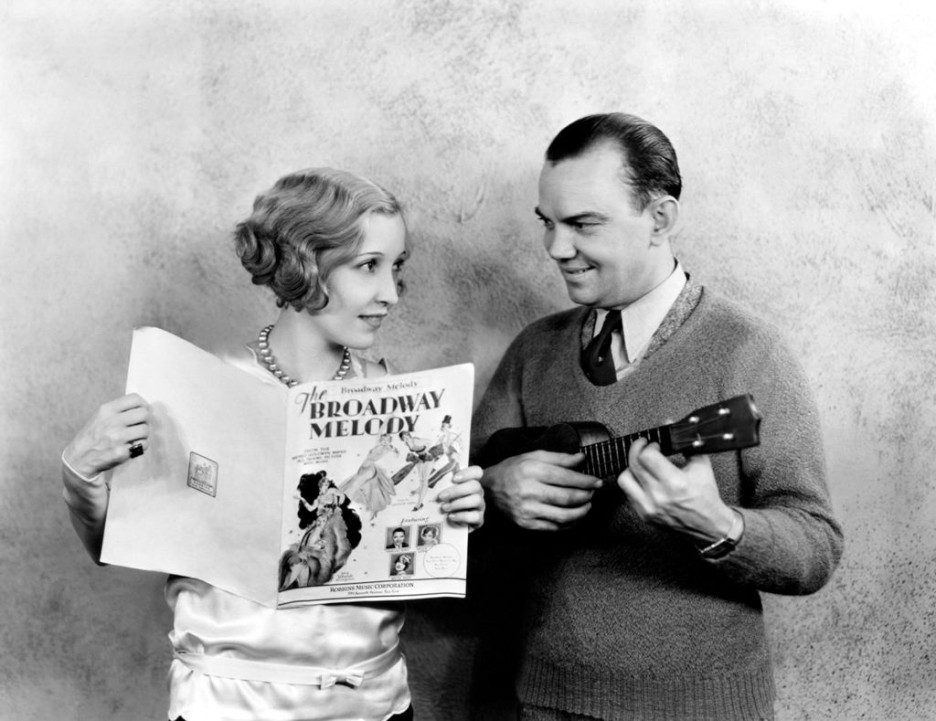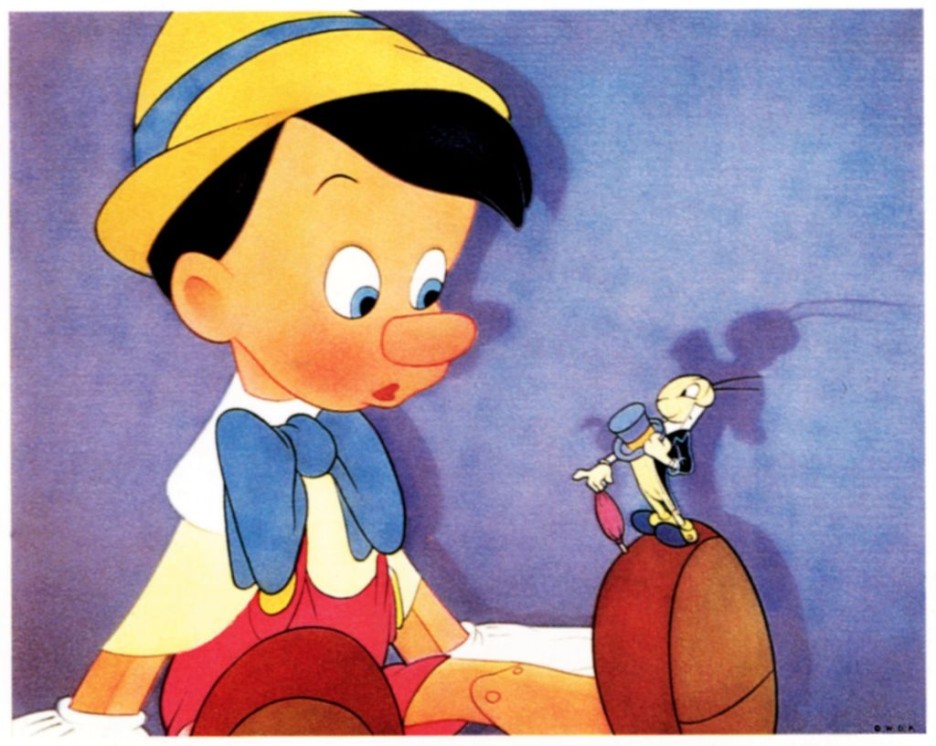Where Is Jiminy? How Guillermo Del Toro Saved A Cricket From A Pestiferious Pinocchio - Or Did He?

If you just saw the trailer for Guillermo Del Toro's upcoming remake of Pinocchio for Netflix, you're probably asking one question: Who is Sebastian, and where the heck is Jiminy Cricket?!
This new trailer was short, featuring only a blue cricket (who sounds suspiciously like Ewan McGregor) telling us that the story of Pinocchio that we think we know isn't exactly how it went. This new narrator, who introduces himself as Sebastian J. Cricket is sort of familiar, and also sort of...not.
So what's the deal with Sebastian J. - and why couldn't Jiminy make the cut?
The answer, as with most of these things, goes back to the original source material - and comes down to modern copyright law.
Copyright or No Copyright: There's no avoiding Disney.
If you know the story of Pinocchio, the specific version you're familiar with is more than likely the Disney one: The one from 1940, featuring beloved characters like Jiminy Cricket and the Blue Fairy.
But as with most of their early fairy tales, Disney didn't come up with this idea on their own. Pinocchio was based on a children's novel published in 1883 - the only problem was, nobody really liked it.
During development of the story's main character, Walt Disney is quoted as saying, "One difficulty...is that people know the story, but they don't like the character." Early drafts of the script suffered from a Pinocchio who was too mean-spirited, even cruel at times, because that's how he behaved in the source material.
Not to be undone by a sassy wooden puppet, however, Disney did what he did best: Went back to the source material and found one small detail that he could use to shift the entire perspective of the story. In this case, that small detail was a little cricket.
The original fate of this little cricket from the original story illustrates perfectly what we mean when we say the OG Pinocchio was cruel. The insect shows up one time simply to tell the easily incenced wooden boy:
"You are a puppet, and what's worse is that you have ahead of wood."
In retaliation for this...not really an insult, more just a statement of fact...Pinocchio violently kills the cricket with a wooden mallet.
So, Obviously, They Needed A Main Character Who Was Not A Murderer.
Walt saw this small detail and asked himself, "but what if Pinocchio actually listened instead?" and Jiminy Cricket, the live-in annoying voice-of-conscience, was born. Using him as a device to shift the narrative of the story, viewers instead get to watch as Pinocchio makes mistakes, learning to listen to his conscience - that little voice telling him to do the right thing - and let that be his guide.
Adding a literal narrative conscience to the story was a game-changer. Suddenly, instead of a cautionary tale of what NOT to do, the story became about learning by example - a far more useful and easy-to-grasp lesson for growing children. Without this small detail - this lil guy - not only would Disney's 1940 version of Pinocchio probably have flopped, but the whole story would have likely faded out of the public consciousness entirely.
Now, we run into a new, but inevitable problem. With a powerhouse like Disney existing in our modern day - comparable in power to the Brothers Grimm and Hans Christian Anderson when it comes to affecting the public canon of our culture's folklore - how do we handle the matter of characters and stories that Disney has altered coming into the public domain again?
This is the first time we're getting to see an example this clear. Other fairy tales Disney has done, like Snow White and Tarzan, have been redone since the studio took them on, but both of those stories came from source material that has managed to stay relevant on its own over the years. If you were to ask someone what version of Pinocchio they know, however, they would probably give you a summary of the Disney version. It's the only one most people know.
With that in mind, knowing that Guillermo Del Toro and Netflix are planning to take on the story becomes even more of a big deal. The artist has a tricky line to walk - stay close enough to the version that fans know and have come to love and accept, but don't cross the line into an infringement on Disney's copyrighted characters; Tell the story in his own way, but remember that the Disney version is unquestionably the comparison model.
All of those details come together to form one question: What do they do about Jiminy?
What DID they do about Jiminy?
Why, thank you for asking - to answer, we actually have to dive deeper into Disney's creative process all those decades ago.
Jiminy Cricket has become a character almost synonymous with the Disney brand. He's up there with representatives for the company just under characters like Tinkerbell or Mickey Mouse, and his song "When You Wish Upon A Star" has been used as the opening theme for nearly every Disney movie that has come out since.
We'd say there's something quintessentially Disney about him, but it's probably more accurate to say that there's something quintessentially HIM about DISNEY - the ethos of his character quickly became enmeshed with the company's values. He wasn't even originally supposed to be Like That - the first model for Jiminy Cricket was uptight and a little pompous, much closer to the version that gets smushed in the book. However, when Disney hired actor Cliff Edwards of Singin' in the Rain, that changed quickly.

As Walt Disney himself explains in some old bonus footage from the video release of the film:
"At first we made Jiminy a sort of pompous little fellow-kind of a windbag you know. As it turns out, Cliff was somewhat responsible for changing Jiminy's character. Cliff's voice had so much life and fun in it that we altered the character to conform with the voice."
A lot of the positivity and folksy charm that Jiminy Cricket is known and loved for now was literally just Cliff Edwards being himself, allowing the character to shine through him - instead of the other way around.
(Disney does that a lot - the most recent example being Elsa in Frozen, who was supposed to be a villain until the creative team heard "Let It Go.")
The voice of the character isn't the only thing that went through several drafts; animator Ward Kimball, who was in charge of Jiminy Cricket's design, also had to go through several different iterations of the insect before his pen produced the version of the little green guy that we all know. The first few, far more realistically buglike, were dubbed "ugly" by Walt, and slowly more and more of his creepy-crawly features were taken away.

Though he obviously went on to be well-loved, his creator Kimball was never satisfied with his design.
"It is not a cricket, it is a blob. It is a little man-creature with no ears, and he wears little English outfits, and the only reminiscence of a cricket's wings are the tails of his coat! The audience accepts him as a cricket because the other characters say he is."
Still, the movie was a success - as proven by the fact that, now, since the copyright law stars have at last aligned to allow other studios to try their hand at the story, Netflix is already taking it on.
So what do you do when you only have two real pieces of source material to work with, and you can't get too close to either of them? Easy. You find the middle. And luckily for Del Toro, the middle had already kind of been identified.
Finding The Middle
This version of the cricket - Sebastian J. Cricket, in case you've forgotten, voiced by Ewan McGregor - is, in fact, more insect-like than his cousin Jiminy. He's not wearing clothes, and his glassy-eyed features and stop-motion mannerisms are actually incredibly reminiscent of the bugs in Tim Burton's James and the Giant Peach - also a Disney movie, albeit not one of their flagship ones.
As far as his personality, we don't have much to go on yet, but based upon the little we hear in the trailer about "a story you may think you know but...you don't. Not really," they seem to be returning to Disney's base model of "a little pompous."
If we had to compare his mannerisms to another Disney character, the most apt would probably be Winnie the Pooh's Owl - best known for being intelligent, but a little stuck-up about it.
Given Guillermo Del Toro's filmography (filled with pieces like Pacific Rim, The Shape of Water, and Crimson Peak), it's unsurprising that he's chosen to take on a slightly more gritty version of the tale. We expect to see him dig into some of the finer moral and idealogical points that Disney may have glossed over in 1940, but without losing the heart and soul that the studio managed to inject it with to keep it alive.
It will be interesting to see as Del Toro takes what is essentially Ward Kimball's original vision for the character and brings him into a new version of the story - and even more interesting to find out what happens to him in the end.
After all, in the original story, the cricket dies - the closest he gets to a happy ending is a little house for his ghost to live in. If Sebastian J. truly does live "in the heart of the wooden boy" as he says, what will happen to him when - as the tale goes - Pinocchio becomes a Real Boy at the end? Does he die? Does he become part of Pinocchio? Does he simply move out?
We'll have to wait a little while to find out - Guillermo Del Toro's Pinocchio comes to life on Netflix in December 2022.
© 2025 Enstarz.com All rights reserved. Do not reproduce without permission.





